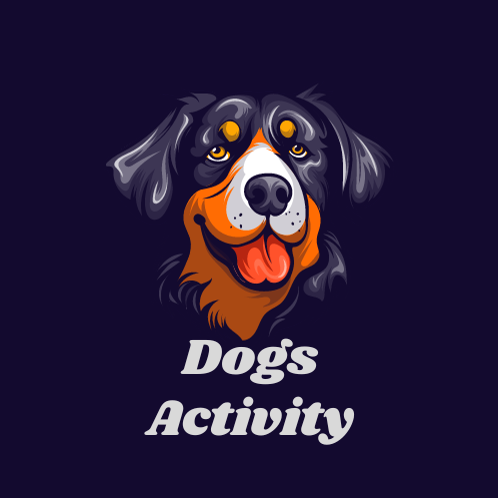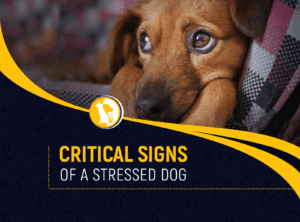
Introduction:
Dogs, often referred to as “man’s best friend,” have an extraordinary ability to form deep emotional bonds with their human companions. This unique connection is built on trust, loyalty, and, above all, affection. But how exactly do dogs express their love and affection? In this comprehensive guide, we will explore the diverse ways in which our canine friends convey their feelings, allowing pet owners to deepen their understanding of the profound emotional lives of dogs.
- The Language of Body:
Dogs are highly expressive animals, and a significant portion of their communication is non-verbal. Understanding the language of their bodies is key to deciphering how they express affection:
a. Wagging Tails: A classic sign of a happy and affectionate dog, a wagging tail can convey excitement, joy, and love.
b. Leaning In: When a dog leans into you or rests their body weight against you, it's a clear expression of trust and affection.
c. Licking: Dogs use licking not only as a grooming behavior but also as a way to show affection. Licking your face or hands is a common display of love.By paying attention to these subtle body language cues, pet owners can develop a deeper connection with their dogs.
- Eye Contact and Gazing:
Eye contact is a powerful form of communication in the canine world. When your dog looks deeply into your eyes, it’s a meaningful gesture that goes beyond mere visual connection:
a. Soft Eyes: A relaxed and soft gaze indicates a sense of comfort and affection.
b. Blinking Slowly: Slow blinking is a sign that your dog trusts and feels safe in your presence.
c. Mutual Gazing: When your dog maintains eye contact with you, it's a way of seeking emotional connection and expressing love.Building a strong bond with your dog involves reciprocating these eye contact cues, fostering a sense of mutual trust and affection.
- Physical Touch and Cuddling:
Physical touch is a universal language of love, and dogs are no exception. They seek physical closeness to express and receive affection:
a. Cuddling: Dogs often enjoy snuggling with their owners, whether on the couch, in bed, or simply lying next to them on the floor.
b. Head Resting: When a dog places their head on your lap or leans against you, it's a clear sign of trust and affection.
c. Pawing: Gently placing a paw on your hand or lap is a way for dogs to seek attention and affection.Allowing and initiating physical contact with your dog reinforces the bond between you and provides a tangible expression of love.
- Playful Behavior:
Play is an integral part of a dog’s life, and engaging in playful behavior is a way for them to express happiness and affection:
a. Bringing Toys: Dogs may bring their favorite toys to you as an invitation to play, signaling a desire for shared fun and interaction.
b. Play Bows: The classic play bow, where a dog lowers their front end while keeping their hindquarters raised, is an invitation to play and indicates joy and affection.
c. Zoomies: Sudden bursts of energy and running around in a playful manner, known as "zoomies," are expressions of pure joy and excitement.Participating in playtime with your dog is not only enjoyable for them but also strengthens the emotional connection between you.
- Vocal Expressions:
While dogs may not communicate through words, their vocalizations convey a range of emotions, including affection:
a. Happy Barks: A series of high-pitched and rapid barks often indicate excitement and joy, expressing their positive feelings.
b. Whining: Soft whining, especially when accompanied by a wagging tail, can signify a desire for attention and affection.
c. Howling: While howling can serve various purposes, including communication, a happy and content howl can be a unique expression of love.Understanding the nuances of your dog’s vocalizations allows you to respond appropriately and strengthen your communication with them.
- Tail Language:
A dog’s tail is a powerful tool for expressing emotions, and its position and movement provide insights into their state of mind:
a. High Wagging Tail: A high, wagging tail often indicates excitement and happiness, signifying a positive emotional state.
b. Low Wagging Tail: A low, slow wag may indicate submission or a desire to appease, expressing a mix of affection and respect.
c. Tucked Tail: A tucked tail can signal fear or anxiety, and addressing the underlying cause is crucial for fostering a secure and affectionate environment.By paying attention to your dog’s tail language, you can better understand their emotional state and respond with the appropriate level of care and affection.
- Gift-Giving Behavior:
Dogs have their own unique way of showing generosity and affection through gift-giving behaviors:
a. Bringing Objects: Dogs may bring you their favorite toys, a stick, or even items they find interesting as a form of sharing and bonding.
b. Presenting Themselves: Rolling over and exposing their belly is a vulnerable position for a dog, and if your dog does this, it's a sign of trust and affection.
c. Sharing Food: Offering you a portion of their food or treats is a canine way of expressing love and sharing resources.Appreciating these gestures and reciprocating with positive attention reinforces the emotional connection between you and your dog.
- Understanding Individual Preferences:
Just as humans have unique ways of expressing affection, each dog has its own preferences and comfort zones. Recognizing and respecting your dog’s individuality is crucial for building a strong and trusting relationship:
a. Personal Space: Some dogs may enjoy close physical contact, while others prefer a bit more personal space. Pay attention to your dog's cues and adjust your interactions accordingly.
b. Favorite Activities: Dogs often show affection by engaging in activities they enjoy. Whether it's a specific game, a favorite walk, or even just lounging together, participating in their preferred activities is a way to bond and express love.By tuning into your dog’s specific likes and dislikes, you can tailor your expressions of affection to align with their preferences, deepening the connection you share.
- Consistent Routine and Dependability:
Dogs thrive on routine and dependability, and your consistent presence and care contribute significantly to their sense of security and affection:
a. Meal Times: Regular and timely meals create a sense of predictability, contributing to your dog's overall well-being and comfort.
b. Walks and Playtime: Establishing a consistent routine for walks and playtime provides a structured and dependable environment that dogs find reassuring.
c. Affectionate Greetings: The way you greet your dog when you come home sets the tone for your interaction. Warm greetings and positive attention contribute to a sense of security and love.Consistency in your daily interactions reinforces the trust and affection your dog feels toward you, fostering a stable and emotionally rich relationship.
- Empathy and Understanding:
Dogs are highly attuned to human emotions, and they often respond with empathy and understanding. Your dog may show affection by:
a. Comforting Gestures: Dogs may nuzzle, lick, or sit close when they sense their owner is upset or unwell, offering comfort and support.
b. Attentiveness: If your dog is particularly attentive during moments of stress or sadness, they are expressing a form of emotional support and affection.
c. Mirror Behavior: Dogs may mirror their owner's emotions, adopting a more subdued demeanor if you're feeling low or becoming more playful when you're in a good mood.Acknowledging and reciprocating this emotional connection demonstrates a profound level of understanding and strengthens the bond between you and your dog.
- Celebrating Milestones Together:
As your dog grows and matures, celebrating milestones together becomes a special way to express affection:
a. Birthdays: Acknowledging your dog's birthday with special treats, toys, or a fun outing is a way to mark their growth and express your love.
b. Gotcha Day: For adopted dogs, celebrating the day they became part of your family is a meaningful gesture that reinforces the bond you share.
c. Training Achievements: Recognizing and celebrating training successes with positive reinforcement and praise fosters a sense of accomplishment and affection.By acknowledging and commemorating these milestones, you create positive associations and shared memories that contribute to the overall joy and affection in your relationship.
- Healthcare and Well-being:
Attending to your dog’s healthcare needs is an essential aspect of showing affection and ensuring their overall well-being:
a. Regular Vet Visits: Scheduling routine veterinary check-ups and addressing health concerns promptly demonstrate your commitment to their health and comfort.
b. Grooming and Hygiene: Regular grooming sessions, including brushing, nail trims, and dental care, contribute to your dog's physical well-being and can be a bonding experience.
c. Healthy Diet: Providing a nutritious and balanced diet tailored to your dog's specific needs is an expression of love that contributes to their long-term health.Caring for your dog’s physical health is a tangible and vital way to demonstrate your affection, ensuring a happy and comfortable life together.
Conclusion:
Dogs, with their unconditional love and loyalty, enrich our lives in ways words cannot capture. Understanding how dogs show affection allows us to reciprocate and strengthen the unique bond we share with our canine companions. Whether through subtle body language, expressive eyes, physical touch, or playful antics, dogs communicate their love in myriad ways. As responsible pet owners, it is our privilege to recognize and respond to these expressions of affection, creating a harmonious and fulfilling relationship that transcends words and transcends species. In the end, the language of love between humans and dogs is universal, timeless, and boundless.



